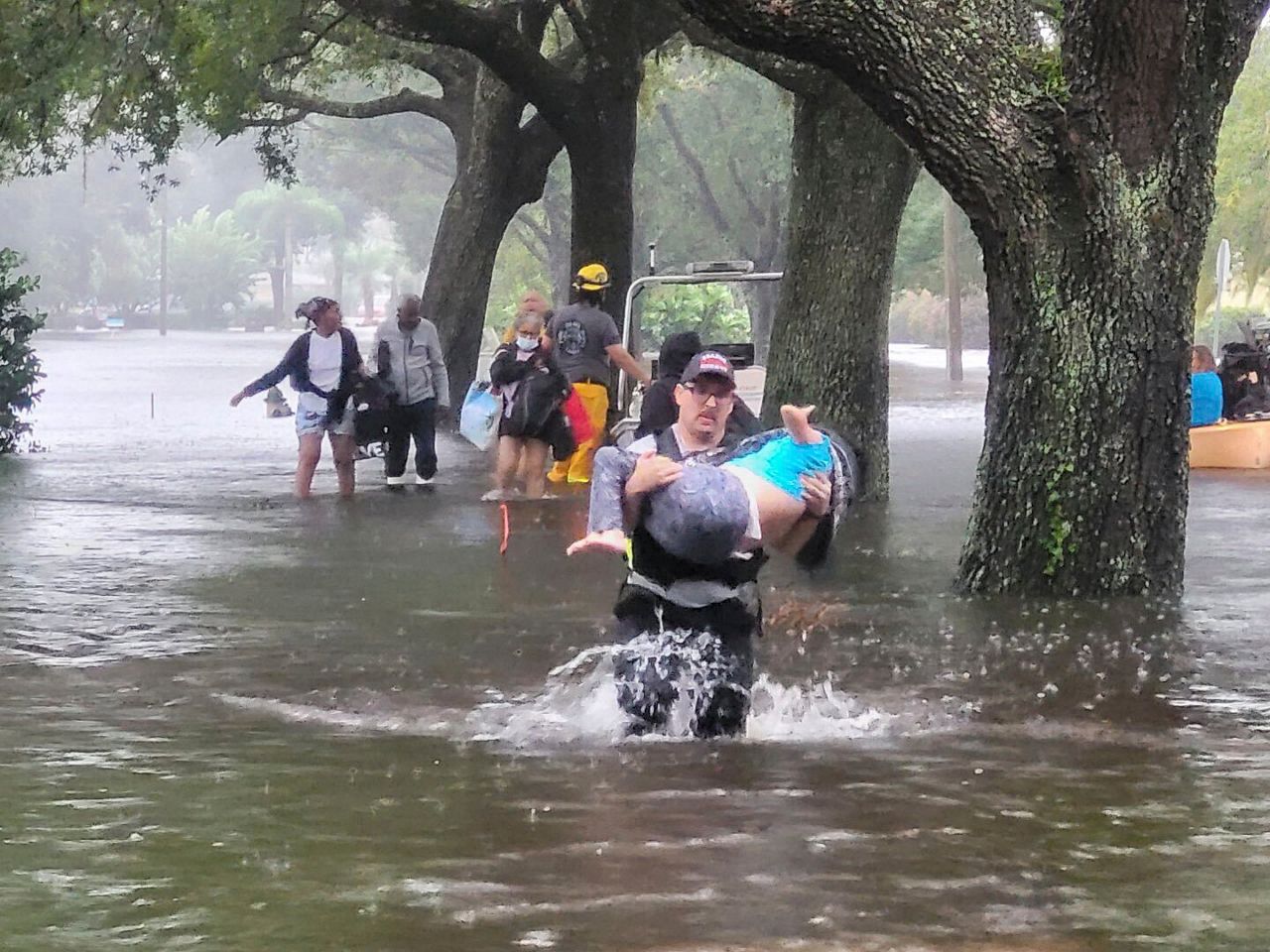ORLANDO, Fla. — Have you recently moved to Florida, and now you’re a bit unsure about it all as we ramp up into Hurricane Season? There’s no reason to fear – tropical systems are a part of life here in Florida.
According to the Annual National Movers Study, Florida was ranked the 5th most moved to state in 2021. And as we dive into another hurricane season peak, there are some things you need to know to prepare yourself and your family for what may lie ahead.
Do you need flood insurance?
Believe it or not, the wind is not the most concerning thing about a tropical system. Sure, it’s what many people may focus on, but did you know its flooding is the most dangerous? Water makes up close to 90% of all deaths in a landfall tropical cyclone. Consider purchasing flood insurance before a system strikes to try and keep you and your property safe.
Fire and EMS services provide high water rescues as flood waters rise. (AP)
Flood insurance is not apart of your regular home insurance package and must be purchased separately.
RELATED | Weather Explained: Dangers of inland flooding
To determine if flood insurance is right for you, take a look at FEMA’s Flood Map.
Flood insurance also requires a 30-day waiting period before the insurance kicks in for your property. So don’t wait until the last second to purchase flood insurance. This should be something you consider before a storm threatens the area.
Prepare your property beforehand
Florida is host to over 4,700 species of native plants and trees. From colorful flowers and bushes to beautiful, tall and majestic palm trees.
But these things can become a hazard to your property if a wind become too strong. Consider doing a scan of your property before a tropical system threatens. This can allow you to trim back any large limbs from trees and take care of any small branches or other debris that may be laying about in your yard.
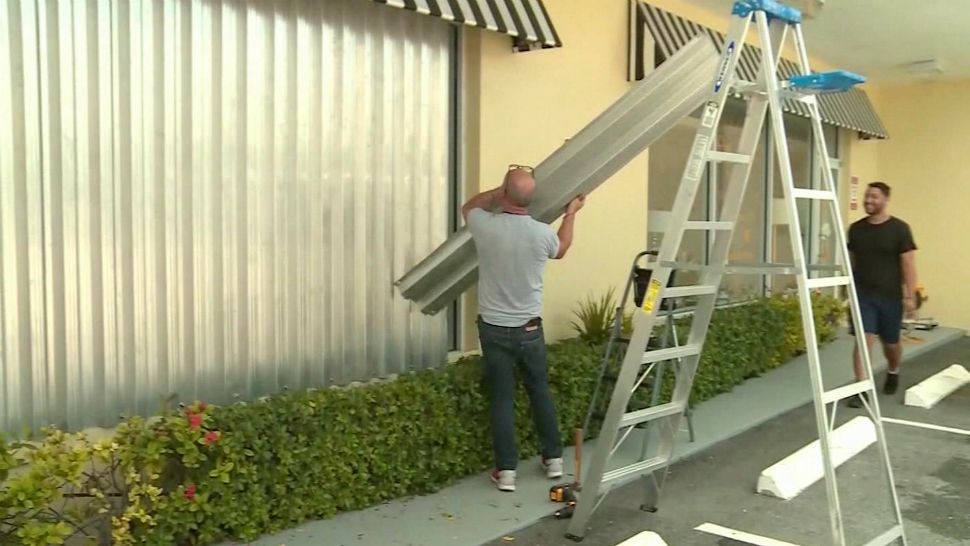
A man boards up his business ahead of a landfalling tropical system. (Spectrum News)
The best advice is to take care of this stuff before hurricane season begins each year. As storms become more of a problem deeper in the season, the more in demand tree trimming services may become which could put you, and your property, in a tough spot.
Should I use sandbags?
If a storm threatens Florida, various city and county governments across the state may consider activating sandbag supply spots. If this occurs, Spectrum News will alert you both online and on-air where these sandbag spots are located.
But do you need to pick up sandbags?
That largely is based on your knowledge of your property. Sandbagging property is most useful for those who are susceptible to flood waters. Those located close enough to the ocean that storm surge is a concern, or those located in low-lying, flood-prone areas should consider utilizing this service to prepare their property.
RELATED | Sandbag locations set to open ahead of a tropical disturbance next week
Some of these sandbag locations will provide not only sand, but shovels, sandbags and specialized help to provide you with the sandbags you need. Some other stations may provide sand and bags, but will require you to bring your own shovel along. Make sure you pay attention to the location, hours and what is or is not provided at each location before showing up.
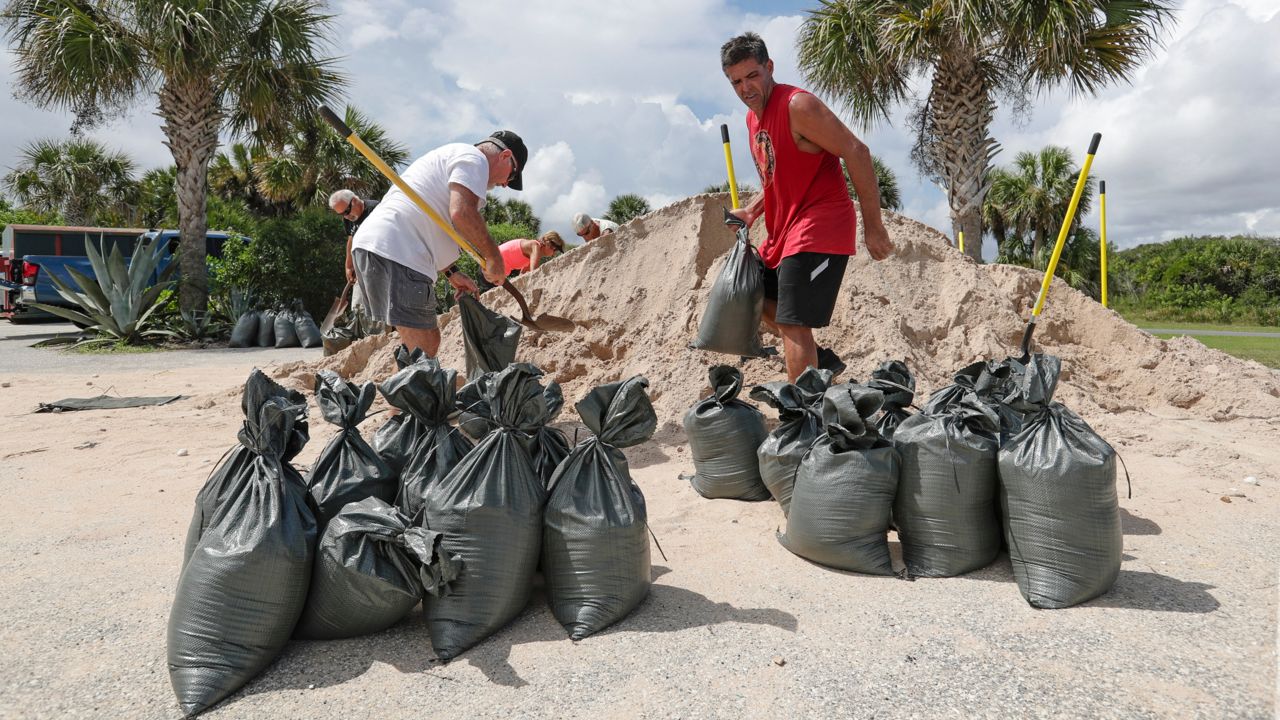
Residents prepare for Hurricane Dorian by grabbing sand ahead of its approach. (Spectrum News)
So after the storm passes, what do you do with the sand? Well, if the sand did not come into contact with flood waters, you can save those sandbags for another storm. Store them in your garage or a shed so you have them again when you need them.
If they did come in contact with flood waters, you can spread the sand out on your lawn or garden as a landscaping technique. Most sandbags can be recycled, but make sure to check before you toss them away.
Prepare a hurricane kit today
You hear us talk about this all the time: get a hurricane kit together. But what do you need in this kit and what should you consider purchasing before a storm threatens?
First and foremost, you want to make sure you have those flashlights ready. LED flashlights are cheap in today’s age and are a perfect way to provide light when the power goes dark. Avoid using candles. Candles, for years, were included in hurricane kits, but the risk of an open flame has led to many unnecessary injuries and deaths after a storm. To avoid that, I recommend you stick to LED flashlights for your source of light. Make sure you purchase plenty of batteries as well to keep them going if they aren’t solar powered.
RELATED | HERE’S A FULL LIST OF WHAT TO HAVE IN YOUR HURRICANE KIT
You should also make sure you pack any necessary medications you may need for at least a week after a storm. Remember, if a storm is strong enough, it could disrupt you from getting back to your day-to-day life sooner, which means you don’t want to be caught without the medications you need the most. Get those restocked ahead of the storm.
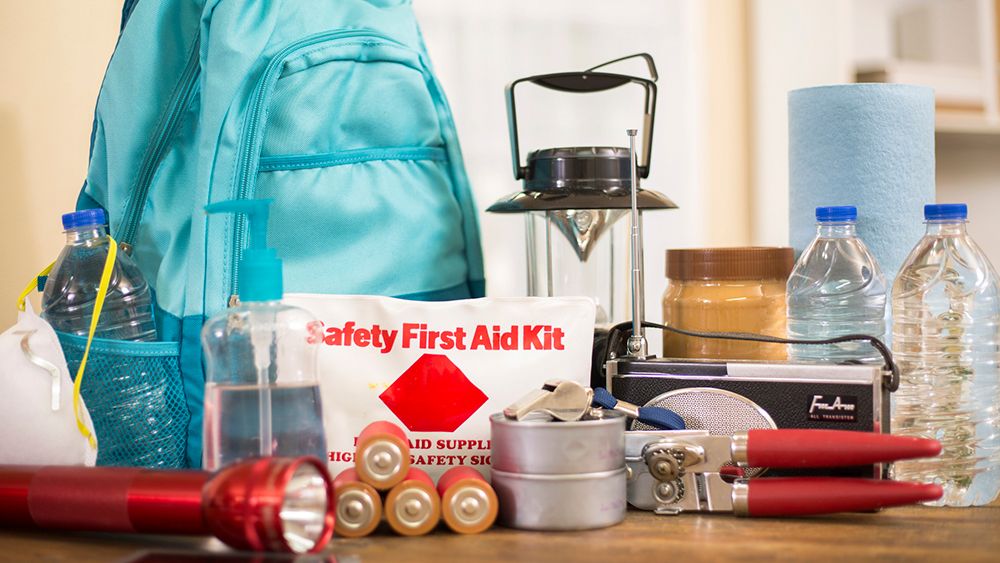
A pre-prepared hurricane kit including first air, lights and batteries. (Spectrum News)
Also consider grabbing some cash – especially small bills. As storms open up, they may not be able to accept credit or debit. And you don’t want to be the person asking to break a $100 bill.
Got pets? Make sure you’re picking up some pet food and any medications they may need as well. Throw in a few toys to also keep them occupied during the storm.
PREPARE TODAY | Hurricane supplies available tax-free again starting this weekend
Non-perishable foods are also a must. You know the staples: PB&J sandwiches, canned fruit and granola. Anything that won’t go bad without the use of a refrigerator or freezer.
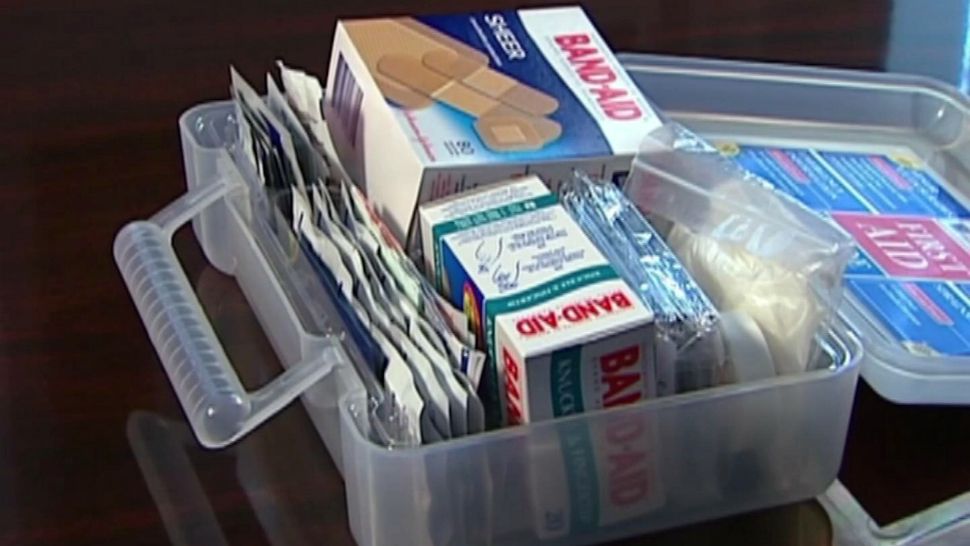
A first aid kit is a necessity in any hurricane kit you prepare. (Spectrum News)
Finally, make sure you grab enough water for you and your family. The general rule is one gallon of water, per person, per day for at least three days. For a family of four, that means grabbing 12 gallons of water to get you through a storm safely. Remember, water isn’t only used for drinking. It can be used for cleaning, bathing and even cooking if you have a gas or propane grill.
What should I do when I’m in the cone?
Ok, you’re in the cone. It’s time you begin to activate your hurricane preparedness plan. That means making sure your hurricane kit is refreshed, restocked and ready to go. It also means you need to finish up any final tasks before the storm passes by.
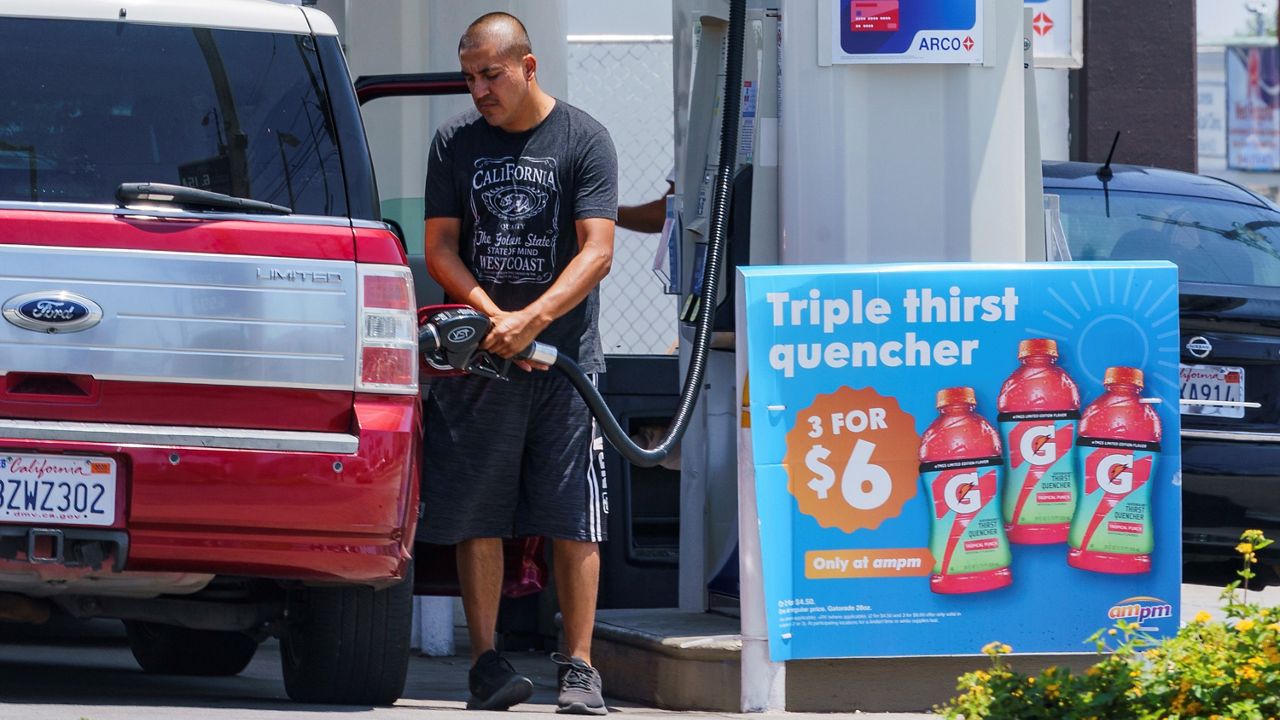
A man fuels up his vehicle at a nearby gas station. (Spectrum News)
First, beat the line to the gas station. As a storm approaches, Floridians are notorious for going to gas stations and filling up. You don’t want to be stuck in those lines waiting for gas for 30 minutes to an hour. Instead, get the gas the first day you’re in the cone. You’ll beat the rush, and you’re going to need it eventually anyway.
TROPICAL UPDATE | A tropical wave is eyeing the Gulf Coast next week
This is also the time to go ahead and run those errands to grab your medications or cash ahead of the storm. Get that stuff taken care of today, giving you and your supplier a few days before the storm arrives to make sure you have exactly what you need.
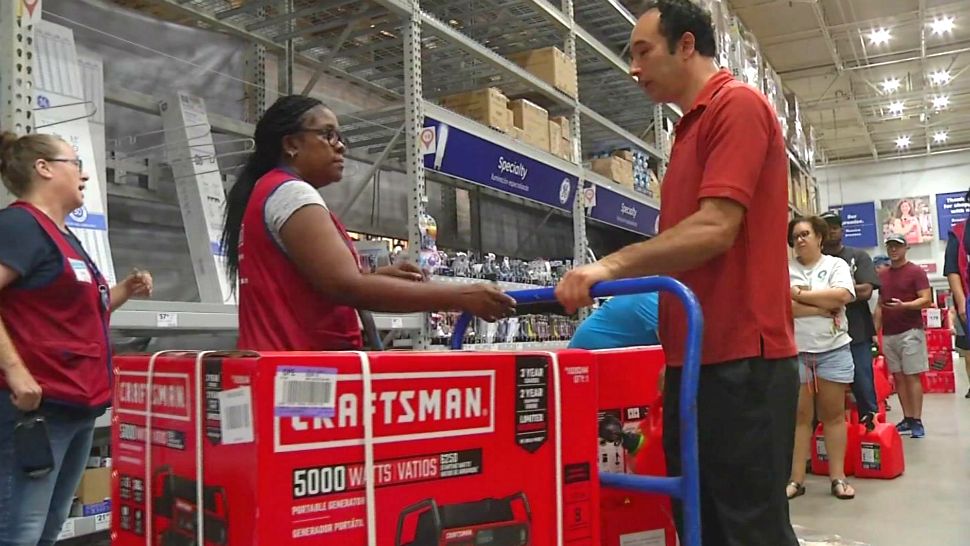
This is the time to make those purchases for your hurricane kit, including generators. (Spectrum News)
This is also the time to begin preparing any last-minute property preparations. Trim those trees in case you didn’t get to it ahead of hurricane season. Secure any loose objects that may fly away. If the storm is very strong, consider bringing outdoor furniture inside to prevent any substantial property damage.
Most Floridians will also say this is the time you stock up on your hurricane party supplies. Everyone is entitled to what they need before a storm, but make sure you have the most pressing essentials first and foremost.
Water is king
We’ve already talked about how important water is ahead of a storm, but this is truly worth emphasizing again. Don’t be that person who shows up last second to a store to buy water. You can purchase a few gallons each time you go to the store over the course of a few months so you’re set when you need it.
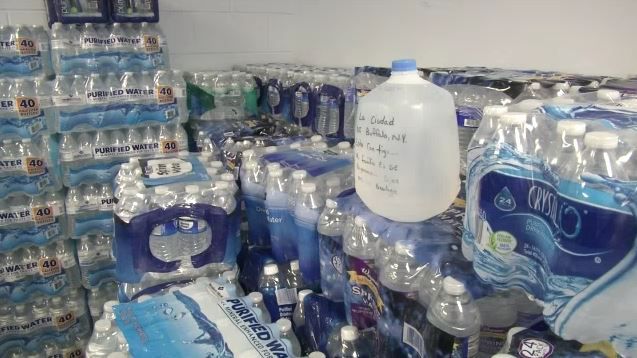
A pallet of water bottle sits ahead of an approaching storm. (Spectrum News)
When a storm is threatening the state, water will be one of the first supplies to go out and you don’t want to be caught without it.
Also, once your area has been placed in a Tropical Storm or Hurricane Warning, now’s the time you may want to consider filling those bathtubs and buckets up with fresh water. It may sound silly, but after a major hurricane, you may lose power for weeks on end. And those buckets and tubs of fresh water prove invaluable when you need to manually flush the toilet.
Am I in an evacuation zone?
A question every Floridian has asked at some point or another – evacuation zones. “Am I in one and if so, which one?”
First, evacuation zones are strictly for the coastline of Florida. That means if you live anywhere inland, away from the coastline, you aren’t in an evacuation zone.
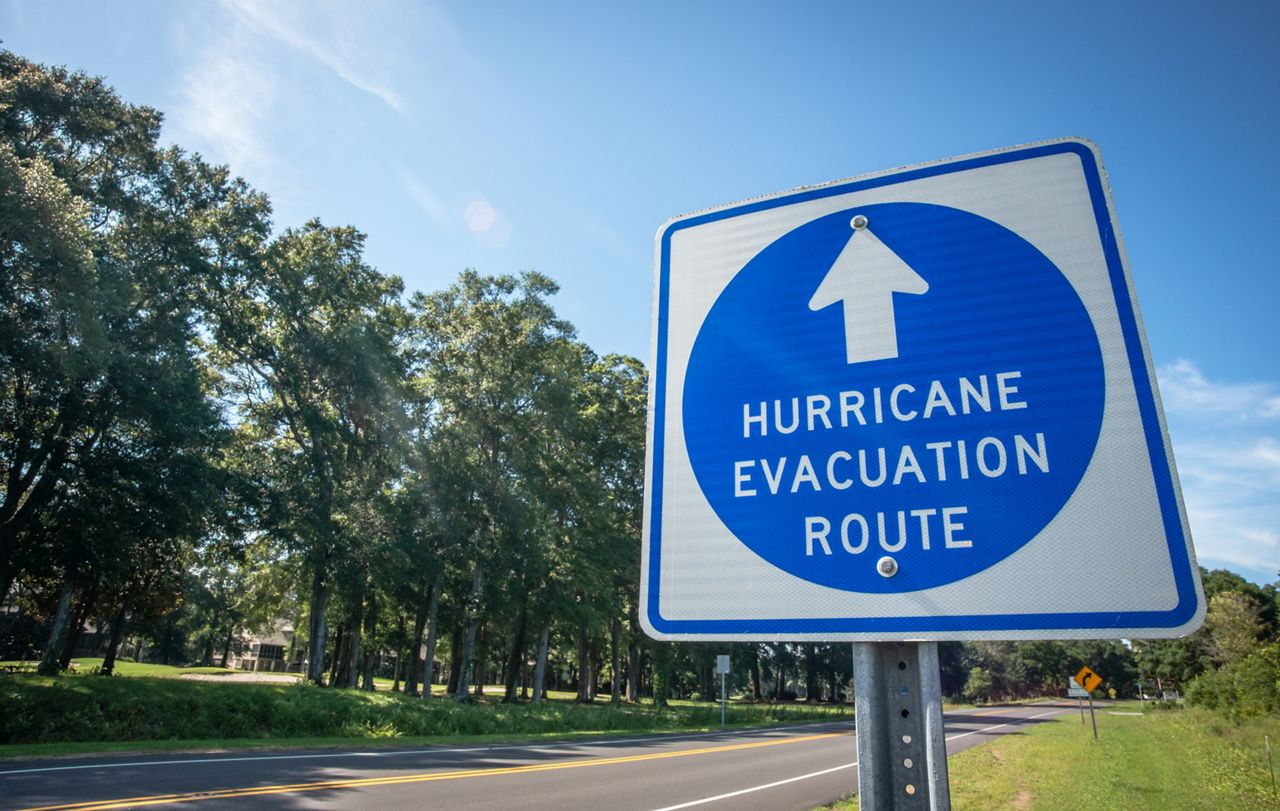
Evacuation zones exist along both Florida’s east and west coast. (Spectrum News)
These zones are developed not because of winds, but because of storm surge. Storm surge is the abnormal rise of tidal water coming ashore during a tropical system. It can provide not only disastrous to buildings and structures, but deadly to those in its path. That’s why these zones were developed – to warn those at most risk of storm surge to get out before it arrives.
To find out if you live in an evacuation zone, you can click here.
TROPICAL IQ | HERE ARE 13 HURRICANE SEASON MYTHS DEBUNKED
So what if you live in an evacuation zone? Should you evacuate?
The answer is always yes if there is a mandatory evacuation. Mandatory evacuations are ordered by state and local officials to keep you safe during a storm. Not every storm will carry a mandatory evacuation, but if one does occur for your zone, be ready to leave the moment it is issued. Take only the most important and valuable things from your home with you, including any important documentation like birth certificates, passports and any household forms. Also, make sure you bring any medication and your hurricane kit along with you, so you have those items wherever you ride out the storm.

If a mandatory evacuation is issued for your zone, you need to be ready to leave immediately. (Spectrum News)
If a mandatory evacuation is issued for your zone, you need to be ready to leave immediately. (Spectrum News)
If a voluntary evacuation is issued, you need to consider if evacuating is right for you. If you lose power for days on end, do you rely on any special medical devices that need power to run? Maybe you live in a mobile or manufactured home that may not live up to strong winds as well as well constructed homes may. These factors should be considered to determine if you need to evacuate.
And when you evacuate, remember: we aren’t asking you to drive hundreds of miles away. We’re asking you to drive tens of miles. In other words, you don’t need to leave the state. Someone in Daytona Beach may want to evacuate to DeLand. Someone in Cocoa Beach may evacuate to Orlando. The goal is to get you to move further inland away from the water. You don’t need to drive hundreds of miles out of state. Just get away from the water.
Words of Wisdom
To wrap this all up, coming from a Floridian who has lived through several hurricane seasons, this time of year is nothing to worry about. No two hurricane seasons are ever the same, and each one will provide its own unique set of challenges along the way. But following these tips will get you prepared for whatever the season may bring. Remember, Spectrum News 13 will keep you up to date on all the latest tropical forecast every hour at :51 past the hour.
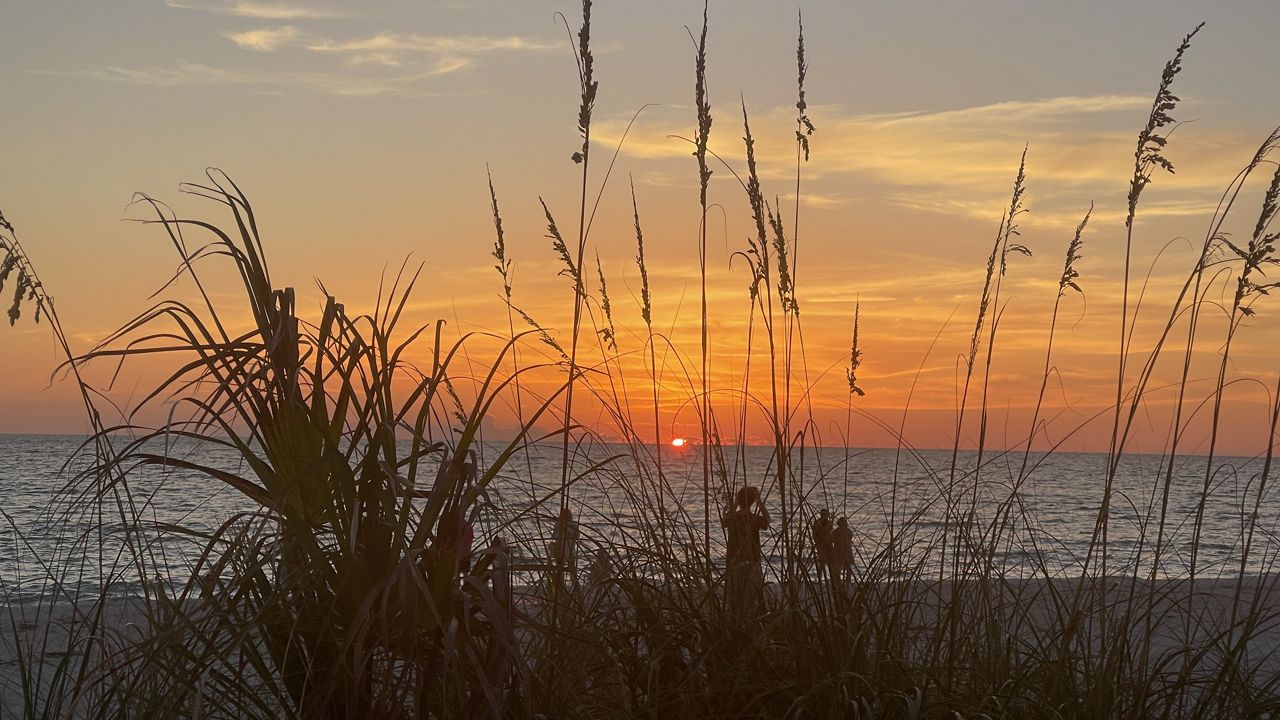
The sun sets along Bradenton Beach, Florida reminding us why we all live here. (Spectrum News)
We’ll also provide you with breaking updates online whenever a storm threatens the area. Download the Spectrum News App in the Apple Store or Google Play and stay up to date with our Weather Experts all season long. Remember, be prepared, not scared.
Our team of meteorologists dives deep into the science of weather and breaks down timely weather data and information. To view more weather and climate stories, check out our weather blogs section.

